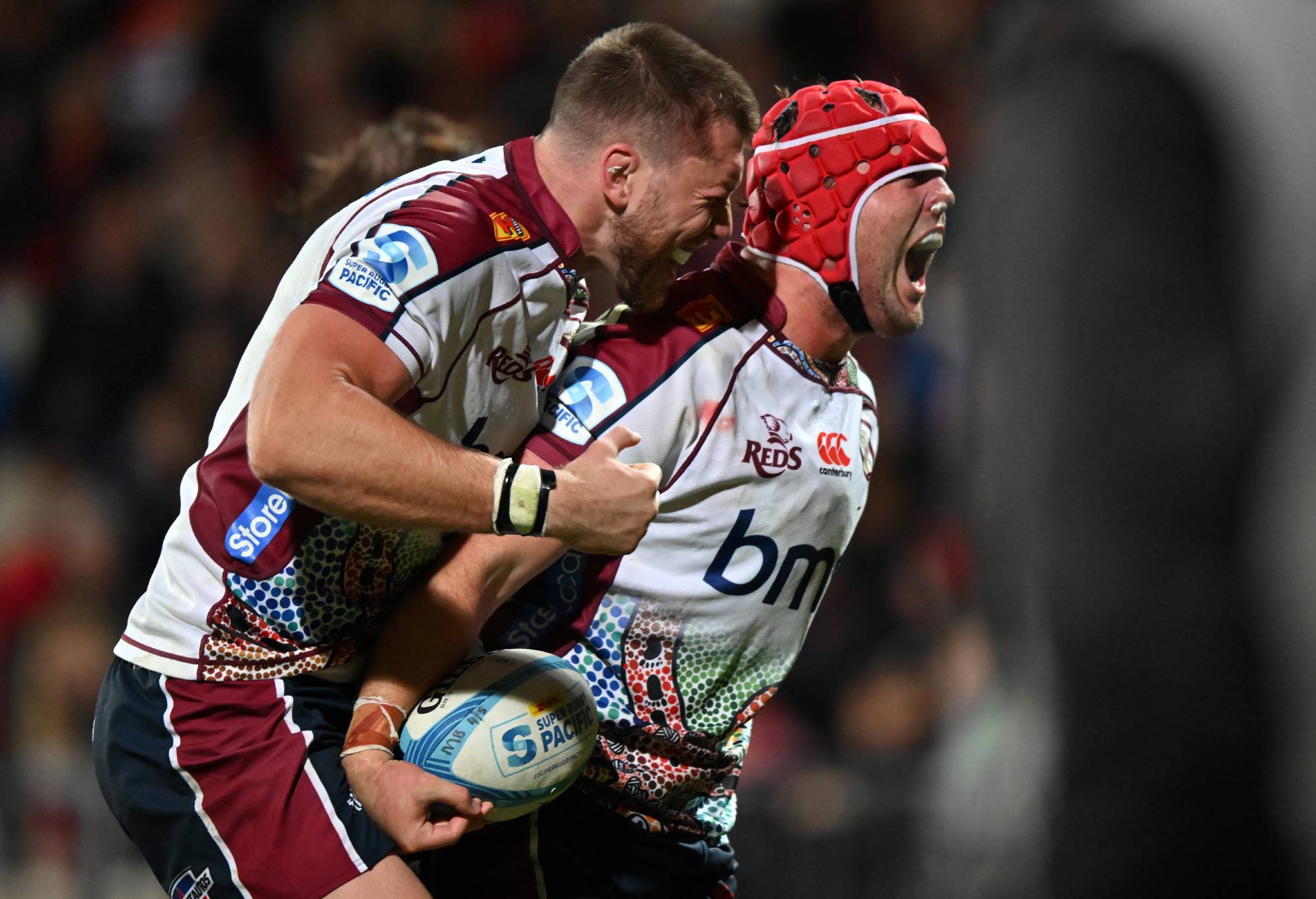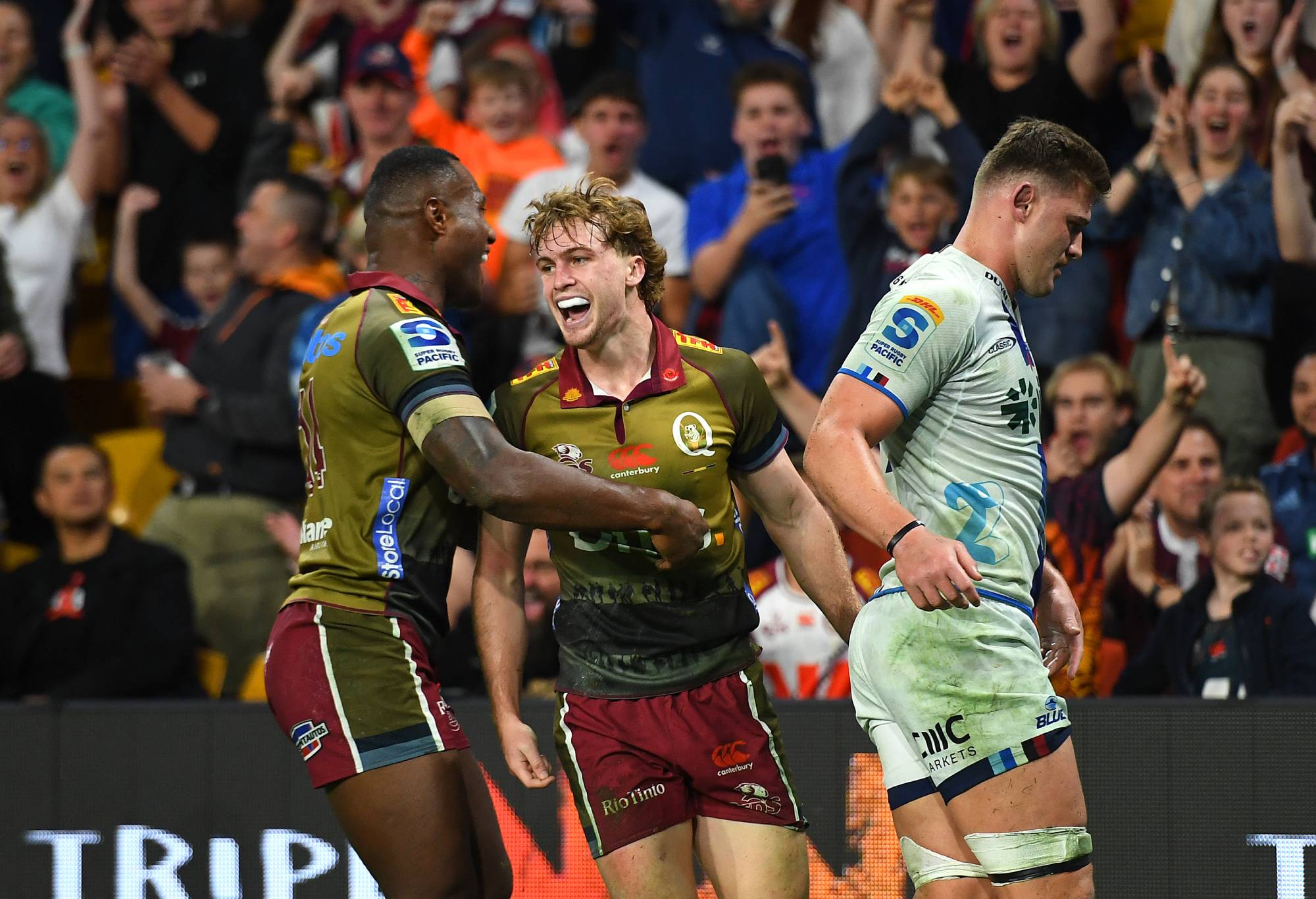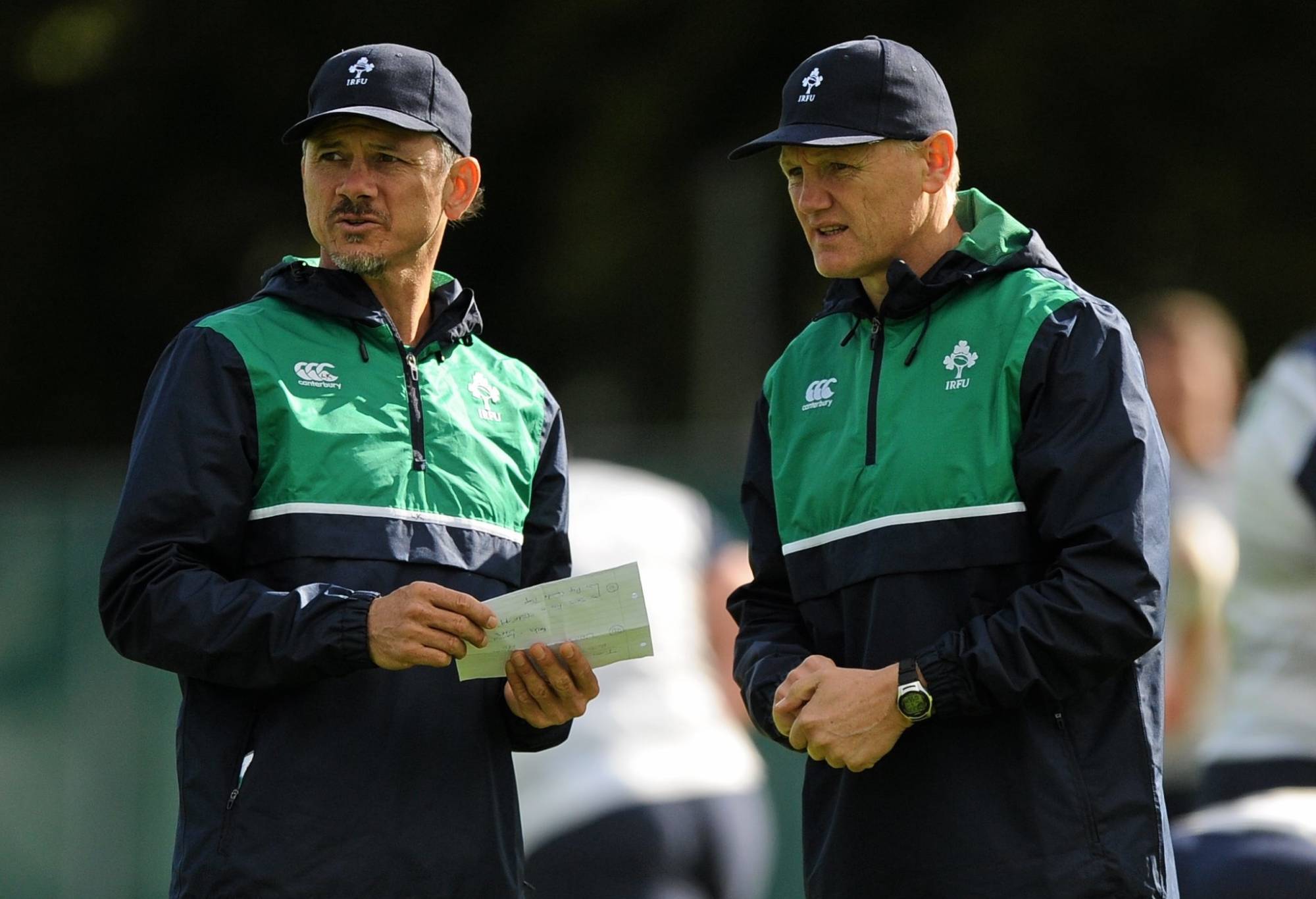Editor

What a journey the last few years have been for the Queensland Reds. In a time of lean pickings for Australian rugby, the Reds’ redemption arc should inspire fans inside and outside the Sunshine State.
From title winners in 2011 to being on the verge of financial ruin during the latter years of that decade and during the pandemic, to roaring back to life under Brad Thorn with a Super Rugby AU title and four consecutive finals appearances across Super Rugby AU, and its trans-Tasman successor – it’s been a wild ride!
With Ballymore redeveloped into a hub for both Queensland and women’s national rugby and the club back in a stronger financial position, things are looking up. The appointment of Les Kiss felt like the natural progression for the club as it builds for another title tilt.
In the first episode of the Roar Rugby Podcast this year, Kiss outlined a clear vision for the Reds in connecting more with Ballymore, the community, and fostering a new culture. He wants them to play exciting rugby that tests the opposition and brings fans back. But above all, he wants the club to be the embodiment of the Queensland spirit.

Les Kiss. (Photo by Kai Schwoerer/Getty Images)
His time overseas had fostered a wise rugby brain, but also someone with points to prove – Kiss had been through ups and downs, from being at the helm of the 2017-18 ‘basket case’ season at Ulster to learning his lessons at London Irish.
His trajectory over the last decade had been much like the Reds – and it has made for a perfect match.
Queensland finished fifth in Super Rugby Pacific this year, improving significantly on Thorn’s final year in charge. While the season ended with a third straight quarter-final exit, those who had been watching all year knew how much the side had progressed.
During the season, the Reds got a significant monkey off their back, with three regular season wins over Kiwi sides – including breaking a 25-year drought in Christchurch. For reference, during his six-year stint, Thorn had only managed three wins overall against Kiwi opposition.

(Photo by Kai Schwoerer/Getty Images)
Even in matches they lost, the Reds proved a tough side to put away, with their loss to the Hurricanes becoming the first golden point result in Super Rugby history, and the Blues winning after the siren in Brisbane.
Kiss’ coaches supercharged the Reds attack, with the side scoring 69 tries (fourth best in the competition), 444 points (fourth best), achieved 99 clean breaks (fourth best), 1,888 carries (fourth best), 7,307 metres gained (fourth best), 348 defenders beaten (fifth best), and won 88.1% of tackles won (second best).
Even better, they were the best-disciplined side in the competition, with only three yellow cards handed out.
Not only were they the best Australian side in most metrics, but the only teams above them were the sides that were making semis and finals, i.e., the Chiefs, Blues and Hurricanes.
The numbers suggest a top-four Super Rugby side: a well-drilled, disciplined, hungry outfit with lethal attack, getting go-forward, scoring plenty of points, and asking plenty of questions of opposition – and for just the first year of Kiss’ run, it is a dangerous sign of things to come.
So, if that’s the case, why did the Reds still concede six losses? Truth be told, as with how many are predicting a massive swing for the Waratahs in 2025, the progression of the Reds was always going to have a few bumps along the way – and Super Rugby is a tough competition.
Statistically, their set piece wasn’t far off the pace compared to the rest of the competition, and the side could compete the whole game. Truth be told, four of the six losses sustained during the regular season came down to losing by less than a converted try in games that could have gone either way.
This was especially the case for their losses to the Hurricanes during the Super Round by golden point, and their close losses at home to the Brumbies and the Blues, where key decisions in the closing minutes cost them.
The only matches where the Reds were truly disappointing in 2024 were in a 22-point quarter-final drubbing by the Chiefs (even then, not helped by an overwhelming first half from the hosts), and their 17-14 loss to Moana Pasifika in Whangārei.
Honestly, the Reds are not far off the pace. Considering new coaches, 11 new arrivals and 12 departures, to produce a first season like that is a fantastic achievement. These issues come down to having more time in the saddle, trusting Kiss’ systems and processes around decision-making, and recognising the weapons in the wider squad to implement that.
It was the one percenters that made the difference between a fifth-placed finish and a potential top-two finish.
If the Reds continue this trajectory under Kiss, they will be one of the most dangerous sides in Super Rugby.
It is a real possibility that Kiss’ side will leapfrog the Brumbies in 2025. After the Waratahs, they have benefited most from the collapse of the Rebels, with six players making the journey up to Ballymore.
These players were some of the best the Rebels had to offer, being current Wallabies Lukhan Salakaia-Loto, Josh Canham and Filipo Daugunu, recent Wallaby Matt Gibbon, Australia XV alumni Lachie Anderson, and Junior Wallaby Mason Gordon.
Kiss has also made smart wider squad selections, bringing in academy graduate Dre Pakeho, Jude Gibbs – who has been tearing it up in the Shute Shield for years – and even an exciting Kiwi product in Heremaia Murray to beef up the back three stocks.
These players will join the likes of Tim Ryan, Frankie Goldsbrough, Will McCulloch, Harry McLaughlin-Phillips, John Bryant, Ryan Smith, Connor Vest and Massimo de Lutiis, among others, who will be snapping at the heels of the starting side.

(Photo by Albert Perez/Getty Images)
Kiss has an incredible 18-capped Wallabies and Kiwi/Samoan Jeffrey Toomunga-Allen at his disposal, with international experience available in every single position – and in the case of the front row, locks and loose forwards, international depth – the most of any Australian Super Rugby side.
Not only will depth breed a competitive, driven environment, but Kiss is addressing the key issues the Reds face – cohesion and decision-making – in the best possible way.
Following the conclusion of the 2024 season, the Reds have played uncapped matches against Wales and Tonga, as well as a rematch of the Saitama-Queensland Shield against the Wild Knights, with the Reds prevailing 42-28.
Before the next Super Rugby season, they will cap this period off with a European tour in January 2025, with matches against the Bristol Bears and Kiss’ former side, Ulster.
These five matches will see the Reds play 20 matches across all of 2024 and before the start of the 2025 season, and that’s even before other trials start. It addresses an issue in Aussie rugby – our seasons are not as long as the rest of the world.
Those five matches ensure the Reds hit the ground running when they face Moana Pasifika – it is such an effective use of pre-season and to address the key issues the side faces.
Every other Aussie Super Rugby side should look at what the Reds have done here as an example for their team. If we can’t get domestic competition, what they are doing here is the next best thing.
So, the squad looks great. The numbers look promising. The side looks to be addressing its key issues. We should be expecting nothing less than improvement from the men in red, right?
In 2025, definitely. There is so much to be excited about if you support Queensland. However, there is the elephant in the room – that Kiss might be about to become a victim of his own success.
The situation around the Wallabies coach looms in the background – who knows, by the time this is published we may have an answer as to whether Joe Schmidt will stay beyond the Lions tour or not.
Should he choose to go, the inevitable question of who will be his replacement will run rampant, and Kiss’ – likely alongside Stephen Larkham at the Brumbies – will be the front-runner for the job.
Even then, Kiss would likely be the preferred option given his strong association and familiarity with Schmidt’s processes, and for his more consistent record overall. Lions series win or not, the Wallabies want to stay on the up towards a home World Cup.

Joe Schmidt and Les Kiss during their Ireland days. (Photo by Sportsfile/Corbis/Sportsfile via Getty Images)
Would it be a case of country over state? If Kiss takes the job, what does that mean for the Reds? How does that affect their clear plans and trajectory towards a Super Rugby title? Who would be his successor?
It would be a disaster if history were to repeat itself and we were to have a similar situation to when Ewen McKenzie took the Wallabies’ role and the club’s form under Richard Graham nosedived almost immediately.
Until we have the answer to the Wallaby question, who knows?
But if it comes to pass, 2025 could be one shot and one opportunity for the Queensland Reds. All, or nothing.